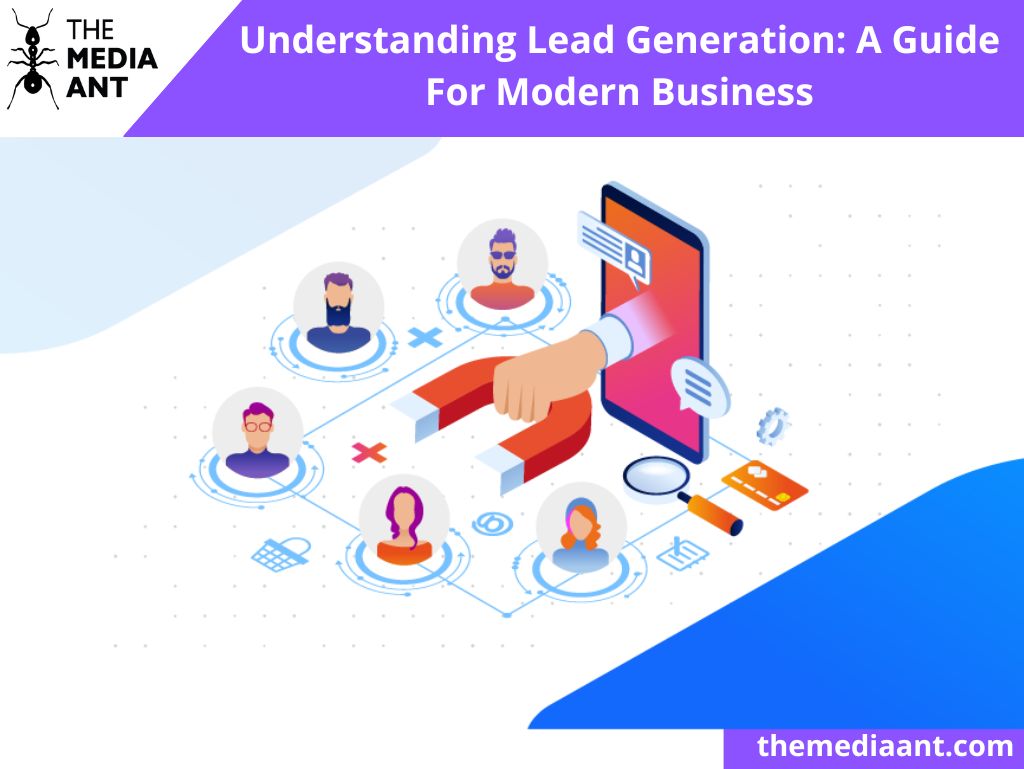In the bustling, ever-evolving digital marketplace of the 21st century, the business landscape is similar to a wild, untamed jungle. The air is thick with the buzz of innovation, the ground is full of relentless hustle of entrepreneurs, and the canopy overhead is a tangled web of complex strategies and tactics. Amidst this vibrant chaos, one concept stands tall, like a towering, ancient tree, its roots deep and its branches wide. That concept is called “Lead Generation”.
Now, you might be thinking, Lead Generation? Isn’t that just a fancy term for finding customers? Well, dear reader, you’re not entirely off the mark. But like the jungle, we just wandered, there’s so much more beneath the surface. Lead Generation is not just about finding customers it’s about finding the right customers. It’s about understanding your audience, engaging them, and ultimately converting them into loyal patrons of your brand.
In this article, we’re going to embark on a thrilling safari through the wilds of Lead Generation. We’ll explore its vast landscapes, uncover its hidden treasures, and learn to navigate its potential pitfalls. So, buckle up, grab your binoculars, and let’s dive into the rich, flourishing world of modern lead generation.
What is a lead?
A lead, in its most basic form, is an individual or an organization that has expressed interest in the products or services your business offers. This expression of interest can take many forms and is often demonstrated by the lead sharing their contact information, such as their email address, phone number, or social media handle. The act of sharing this information implies a willingness on the part of the lead to receive further communication from your business.
What are the different types of Lead?

In the realm of marketing, leads are typically categorized into several types based on their level of engagement, the source of acquisition, and their readiness to make a purchase decision. Understanding these different types of leads is crucial for businesses to tailor their marketing and sales efforts effectively.
Marketing Qualified Lead ( MQL): These are individuals or organizations that have shown an interest in your company’s products or services by engaging with your marketing content. They might have downloaded an ebook, signed up for a newsletter, or attended a webinar. While they have shown interest, they are yet ready to make a purchase and need further nurturing through the sales funnel.
Sales Qualified Lead (SQL): These kinds of leads have shown a clear intent to purchase and are ready for direct sales contact. They might have requested a product demo, filled out a form for a quote, or shown consistent engagement with your brand over time. SQLs are often considered as “hot leads” and are prioritized by the sales team.
Product Qualified Lead (PQL): This is a relatively new type of lead, often used by companies with a freemium business model. PQLs are users who have used a product and taken actions that indicate a likelihood to become a paying customer. For instance, they might have used a free trial of your software and reached out to customer service for more information about premium features.
Service Qualified Lead: These are leads who have indicated to your service team that they are interested in becoming a paying customer. For Instance, a customer who tells a service representative that they are interested in upgrading their account from basic to premium could be considered a service lead.
Information Qualified Lead (IQL): These are leads at the very top of the sales funnel who are seeking information. They’ve given you their contact details in exchange for a piece of educational content, like an ebook or a white paper. At this stage, they’re just beginning to identify their problem and are not ready for a sales pitch.
Warm and Cold Leads: These terms are used to describe a lead’s readiness to buy. A warm lead has shown interest in your product or service and might have been nurtured through marketing efforts, but isn’t quite ready to buy. A cold lead is someone who hasn’t shown interest yet and may not know about your company or its offerings.
What is lead generation?

Lead generation is the process of attracting and converting potential customers who have shown interest in your company’s products or services. It involves creating enticing strategies, such as offering valuable content or exclusive deals, to capture the attention of prospects. These individuals or organizations, known as leads, express their interest by sharing contact information, allowing businesses to nurture these relationships through targeted marketing efforts, with the ultimate goal of converting leads into loyal customers. In the digital age, lead generation often occurs via online channels, including websites, email marketing, social media, and search engine optimization.
Why is lead generation important for your business?
Lead generation is a vital cog in the wheel of business growth for several reasons:
Sustainable Customer Acquisition: Lead generation is a proactive and strategic process that attracts potential customers who have already shown an interest in your products or services. This makes the sales process more efficient and increases the likelihood of conversions.
Targeted Marketing: By generating leads, businesses can collect valuable information about prospects, such as their needs, preferences, and behaviors. This allows for more targeted and personalized marketing efforts, which can improve engagement and conversion rates.
Revenue Growth: More leads translate into more potential customers, and ultimately, more sales. By continuously feeding the sales funnel with qualified leads, businesses can ensure a steady stream of revenue.
Business Scalability: Lead generation allows businesses to control the number and type of leads they generate, which can be scaled up or down based on the business’s growth strategy and capacity.
Competitive Advantage: A robust lead generation strategy can give businesses a competitive edge, enabling them to attract and retain customers in a competitive market.
How can you qualify a lead?

Qualifying a lead involves determining whether a prospect has the potential to become a customer based on various factors such as their need for your product or service, their decision-making power, their budget, and their readiness to buy. Here are some steps to qualify a lead:
Identify Needs: The first step in qualifying a lead is to identify whether the prospect has a need or interest in your product or service. This can be done by analyzing their behavior (such as the pages they visited on your website or the content they downloaded) or through direct questions.
Assess Interest: Carefully gauge the lead’s interest level in your product or service. This can be determined by their engagement with your marketing efforts, such as email opens, click-through rates, or event attendance.
Determine Budget: It’s essential to determine whether the lead has the budget to purchase your product or service. This can be tricky, but it can be done through direct questioning or by providing pricing information and gauging their reaction.
Check Authority: Ensure the lead has the authority to make purchasing decisions. From a B2B perspective, the person you’re communicating with might not be the decision-maker, so it’s important to identify who in the organization has that power.
Evaluate Timeline: Determine the lead’s timeline for making a purchase. If they’re planning to buy in the near future, they’re a hotter lead than someone who’s just in the research phase.
Fit with Your Offering: The lead should be a good fit for what you’re offering. This means their needs align with the features and benefits of your product or service.
Lead generation process?

The lead generation process is a series of steps that attracts potential customers and converts them into someone who has indicated an interest in a company’s product or service. Here’s a typical lead generation process:
Attracting Prospects: The first step is to attract potential customers to your business. This can be done through various methods such as content marketing (blogs, videos, ebooks), social media marketing, SEO (Search Engine Optimization), PPC (Pay-Per-Click) advertising, and more.
Capture Information: Once you’ve attracted prospects, the next step is to capture their information. This is typically done through a lead capture form on a landing page where prospects can submit their contact details in exchange for valuable content or offers (like ebooks, webinars, free trials, etc.). This is where a prospect officially becomes a “lead.”
Qualify the Lead: Not all leads are equal. Some might be eager to buy, while others are just starting to research their options. This step involves assessing the lead’s level of interest, budget, purchasing authority, and fit with your product or service to determine how likely they are to become a customer. This process helps to differentiate between Marketing Qualified Leads (MQLs) and Sales Qualified Leads (SQLs).
Nurture the Lead: Leads that aren’t ready to buy need to be nurtured which are moved along the sales funnel. This can be done through various methods like email marketing, retargeting, personalized content, and more. The goal is to build a relationship with the lead, providing them with the information they need to eventually decide to make a purchase.
Sales Handoff: Once a lead is qualified and ready to buy, they are handed off to the sales team. The sales team will then work to close the deal.
Analysis and Optimization: The final step in the lead generation process is to analyze the results and optimize your strategies. This might involve looking at conversion rates, assessing the effectiveness of different channels, and identifying areas for improvement.
Lead generation strategies?

Lead generation strategies are methods that businesses use to attract potential customers and convert them into leads. Here are some effective lead-generation strategies:
Content Marketing: Creating valuable, relevant content (like blog posts, ebooks, white papers, webinars, and videos) can attract prospects and encourage them to share their contact information.
Search Engine Optimization (SEO): By optimizing your website and content for search engines, you can attract organic traffic. This involves using relevant keywords, creating high-quality content, and ensuring your website is user-friendly.
Social Media Marketing: Platforms like Facebook, LinkedIn, Twitter, and Instagram can be powerful tools for lead generation. You can share content, engage with followers, run ads, and even host live events to attract leads.
Email Marketing: By offering valuable content in exchange for a visitor’s email address, you can build a list of leads to nurture over time. Personalized email campaigns can keep your brand top-of-mind and encourage leads to make a purchase.
Pay-Per-Click (PPC) Advertising: Platforms like Google Ads or Bing Ads allow you to run ads that appear in search engine results for specific keywords. You pay each time someone clicks on your ad, which can drive targeted traffic to your website.
Landing Page Optimization: A landing page is a standalone web page created specifically for a marketing or advertising campaign. It’s where a visitor lands after they click on a link in an email, or ads from Google, Bing, YouTube, Facebook, Instagram, Twitter, or similar places on the web. Optimizing your landing pages with clear calls-to-action, compelling headlines, and concise forms can improve conversion rates.
Direct Outreach: Sometimes, especially in B2B markets, direct outreach via cold calling or cold emailing can be effective. This strategy involves reaching out to potential leads directly to pitch your product or service.
Lead Generation Tools:

When it comes to lead generation tools, it’s like having a virtual scout that tirelessly combs the digital landscape to find your potential customers. Imagine having the power of HubSpot, Marketo, or Pardot at your disposal. These software’s are the knight in shining armor of the digital age, boldly automating lead capture and follow-ups so that you never miss out on an opportunity.
Next, harness the persuasive power of words with email marketing tools. Mailchimp, Constant Contact, and Campaign Monitor are your quills, inks, and parchments in this digital age, helping you to craft messages that captivate and convert. They’re your dedicated scribes, making list building, campaign crafting, and metric tracking a breeze.
The power of social media is undeniable. The right social media tools, such as Hootsuite, Buffer, and Sprout Social, are like your trusted town criers in the bustling market of the digital world. They keep your social media accounts buzzing, posts flowing, and analytics under control, ensuring your message always reaches the right audience.
Web analytics tools, on the other hand, are your crystal ball into the online world. Tools like Google Analytics help you gaze deep into your website’s performance, revealing which pages cast the most potent spells, driving traffic, and fueling conversions.
Then we have the magicians of visual allure – content creation tools. Canva, Piktochart, and Venngage are the artists of the digital realm, assisting you in creating visual stories through professional graphics, infographics, and other eye-catching visual content. With these tools in your arsenal, your lead generation campaigns will never lack visual charm.
Lastly, let’s not forget about CRM software. Salesforce, Zoho CRM, and Freshsales are like the heart of your business operations, pumping life into your lead management and tracking. These tools automate follow-ups, analyze sales data, and keep your customer relationships thriving.
Using the right lead generation tools can empower you to paint a vivid picture of your your business in the minds of your prospects, effortlessly transform strangers into leads, and leads into loyal customers. Equip yourself with these tools and embark on an exciting journey of successful lead generation.
Creating effective lead-generation campaigns

Creating effective lead-generation campaigns involves a strategic approach that combines understanding your audience, delivering value, and optimizing your efforts based on performance. Some effective ways of creating lead-generation campaigns are mentioned below:
Define Your Audience: Understanding who your ideal customers are is the first step in any lead generation campaign. What are their needs, pain points, and interests? What kind of content do they consume? Where do they spend their time online? The answers to these questions will help you tailor your campaign to attract the right leads.
Set Clear Goals: What do you want to achieve with your lead generation campaign? Are you looking to attract a certain number of new leads or perhaps you want to increase conversions from existing leads? Having clear, measurable goals will help guide your strategy and provide a benchmark for success.
Choose Your Lead Magnet: A lead magnet is something of value that you offer to potential leads in exchange for their contact information. This could be an ebook, a webinar, a free trial, a discount code, or anything else that your audience might find valuable.
Create a Landing Page: Your landing page is where potential leads will land after clicking on your ad or promotional content. This page should be designed to convert visitors into leads, with a clear and compelling headline, a brief description of your offer, and a simple form to collect contact information.
Promote Your Campaign: Use various channels to promote your lead generation campaign. This could include email marketing, social media, content marketing, SEO, PPC advertising, and more. The channels you choose will depend on where your audience spends their time and what kind of content they consume.
Nurture Your Leads: Once you’ve collected leads, it’s important to nurture them through the sales funnel. This could involve sending them personalized emails, offering them additional valuable content, or following up with a phone call.
Measure and Optimize: Use analytics tools to measure the success of your campaign. Are you attracting new leads? Are those leads converting into customers? Use this data to identify areas for improvement and optimize your campaign.
Testing: Always keep testing. Try out different headlines, images, and calls to action. Test different lead magnets, and see which ones attract the most leads. The more you test, the more you’ll understand what works for your audience.
FAQs
What is lead generation?
Lead generation is a marketing process of attracting and converting potential customers who show interest in a company’s products or services, often achieved through various marketing strategies.
Why is lead generation important?
Lead generation is crucial as it creates a sales pipeline, attracting interested prospects and nurturing them into customers. It enables targeted marketing, efficient customer acquisition, and drives business growth.





